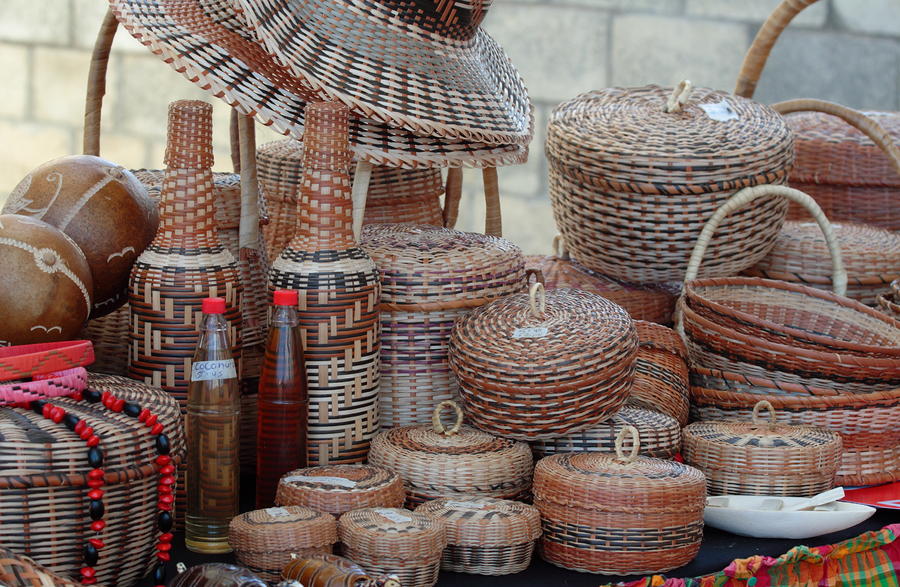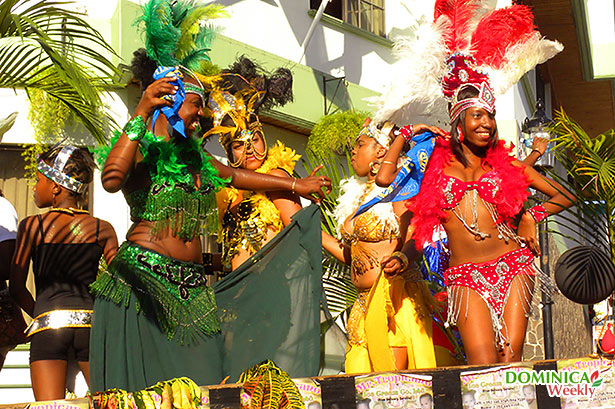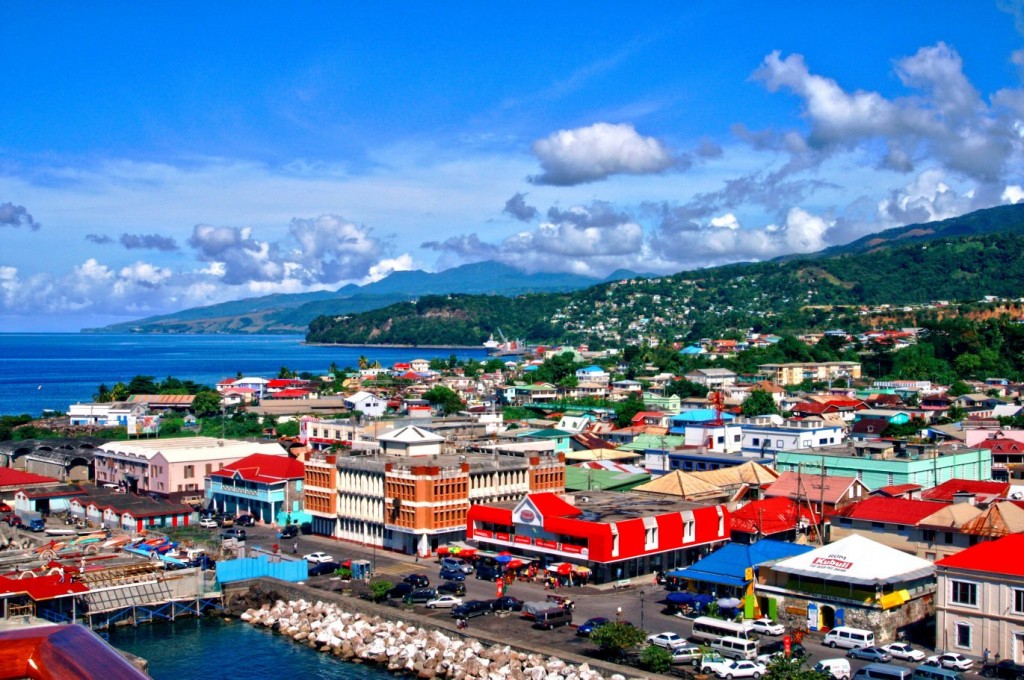New Year’s Day (January 1): For most Dominicans, people tend to
celebrate in the homes of family and friends, usually involving a great meal
and spending time reflecting on the past year and their hopes for the coming
year, and of course music and dance. However, there are a lot of people who celebrate out at clubs and restaurants as well. Leading up to this holiday, people do a
deep cleaning of their homes. They
get rid of the old things no longer needed, and then clean and repair
everything to make new again. On
New Year’s Day, it’s considered bad luck to even pick up a broom – it’s feared
that you might brush away the good luck. Many Dominicans even believe in
opening up doors and windows at the stroke of midnight to let the evil spirits
out to make room for the good spirits.
Some people hang 12 grapes to signify the 12 months. And like some other Latin countries,
the color of the clothes you wear into the new year signifies what you truly want:
green if you want more money, yellow if you want a better job or to work
better, red for a better future or for love, white for better health, etc. I
think I’m going to wear yellow and green this year.
Atira’s Birthday (January 6): I have found this holiday
listed in a couple of places, but there wasn’t any information on this
anywhere. I couldn’t find who Atira
was or why they celebrate Atira’s birthday. January 6 also happens to be Three Kings Day, so I don’t
know if there are any overlapping celebrations there. Please, if you know of any information on this, please let
me know.
Our Lady of Altagracia (January 21): Our Lady of Altagracia is one of the
patron saints of the Dominican Republic.
The portrait of the Virgin Mary of the same name is held in the The
Basilica of Our Lady of Altagracia in the city of Salvaleón de Higüey. It used to be held on August 15, but
they moved this holiday to coincide with their victory over the French back in
1690. Every year, people will trek
to Salvaleón de Higüey to view the portrait and spend the day in prayer,
all-night church services, singing, dancing, and enjoying special meals.
Duarte’s Birthday (January 26): Juan Pablo Duarte
is considered the Founding Father of the Dominican Republic. He was one of the leaders who led the
fight for independence from Haitian control of their side of the island. After they officially declared
independence, he was also declared the first president. Even though his birthday is on January
26, the holiday is celebrated on the nearest Monday to this day, and it’s often
viewed as a day of national pride.
Independence Day (February 27): This marks the
Dominican Republic’s independence from Haiti. Dominican flags are hung and everything is decorated in red,
white, and blue. The president
usually gives a speech, and parades march through the streets. In the Dominican Republican, Carnival
celebrations pretty much last the entire month, so many of those celebrations
overlap with Independence Day celebrations as well. I’m guessing this would be a great time to visit.
Good Friday / Holy Week (varies): The celebrations
start at the beginning of Holy Week, or Santa Semana. Palm Sunday is celebrated with processions with palms. It’s
common to wash your feet in the morning and at night on Maundy Thursday. Good Friday is the day in which there
is the Procession of the Cross – some do it in the morning, others in the
afternoon – but it’s always in the same direction that Jesus carried the
cross. It’s also common that many
people do not eat meat on this day, but rather people fix a dish known as
“sweet beans” to share with their friends and family. Holy Saturday is spent without speaking, especially bad
words, and children can’t be physically punished (I know mine would definitely
take advantage of that). On
Easter, most people attend a special Easter mass, followed by fabulous,
elaborate meals shared with family and friends.
Labor Day (May 1): Although Labor Day is actually May 1, it is observed on the
nearest Monday. For most
Dominicans, it’s a long weekend of relaxing at the beach or doing some kind of
recreational activity. Like most
countries, it’s usually a time of thanking the worker and addressing labor
issues. The Dominican Republic
does have some problems with child labor in the agricultural industries and
certain factory work as well.
Unemployment, underemployment, income inequality, energy inefficiencies,
migrant workers, and safety standards are all issues that plague Dominican
workers.
Corpus Christi (varies): This is the Catholic feast
day in honor of the last supper. This takes place 60 days after Easter, or the
Thursday after the 8th Sunday after Easter. Many people attend special services at
church in order to take the Eucharist, or Holy Communion. Many churches are
decorated with flowers in honor of this day.
Restoration Day (August 16): This is sort of the D.R.’s second
independence day. The first one in
February celebrates their independence from Haiti. This one celebrates the beginning of the war with Spain,
which led to their independence again.
See, after they gained their independence from Haiti, they became part
of Spanish rule again, only to have to fight for their freedom again. The war began in 1863 and ended in
1865. The largest celebrations are
held in Santiago and in Santo Domingo, two of the oldest cities in the
Americas. Festivities include
parades, music, dancing, street performances, lots of local food and drink, and
military parades. It's also celebrated in the Dominican diaspora, especially in the United States, where they have the annual Dominican Day Parade held in New York City.
Our Lady of Las Mercedes (September 24): This is
the second patron saint of the Dominican Republic. Legend has it that when Christopher Columbus was trekking
around the island, the Lady of Mercedes appeared and scattered all of the native
Taíno people. Sounds a little
implausible to me, but I suppose it’s because it’s a legend. There are a couple
of churches erected in her name and people take special trips to visit these
churches on this day.
Constitution Day (November 6): This holiday marks the day that the
Constitution was signed in 1844.
It was written up just after they gained independence from Haiti and was
based on the Constitution of the United States. The holiday is generally celebrated with a military parade,
an address by the president, and the playing of the national anthem.
Christmas Day (December 25): The Dominican Republic celebrates
Christmas almost as long as the US does.
They generally start around December 1 and go until January 6, which is
also known as Three King’s Day. Many
people sing Christmas carols, eat special foods made during Christmas season,
decorate Christmas trees and exchange gifts with friends and family. A lot of weddings are held during this
season as well. Many people
display nativity scenes at the base of their Christmas tree as well as display special decorations made of wood and straw called charamicos. Christmas
Eve is when most families have their large special meal with expensive alcohols
and other specialty dishes and sweets.
Up next:
art and literature


.jpg)






























